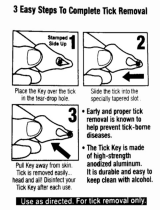
APS User Manual
2
1.2.1-4 Detailed Statistics _______________________________________________________________ 53
1.2.1-5 QoS Statistics ___________________________________________________________________ 55
1.2.1-6 SFP Information _________________________________________________________________ 56
1.2.1-7 EEE ___________________________________________________________________________ 58
1.2.2 ACL _____________________________________________________________________ 60
1.2.2-1 Ports __________________________________________________________________________ 60
1.2.2-2 Rate Limiters ___________________________________________________________________ 63
1.2.2-3 Access Control List _______________________________________________________________ 65
1.2.2-4 ACL Status _____________________________________________________________________ 75
1.2.3 Aggregation ______________________________________________________________ 77
1.2.3-1 Static Trunk ____________________________________________________________________ 77
1.2.3-2 LACP __________________________________________________________________________ 80
1.2.3-2-1 Configuration _______________________________________________________________ 80
1.2.3-2-2 System Status _______________________________________________________________ 82
1.2.3-2-3 Port Status _________________________________________________________________ 83
1.2.3-2-4 Port Statistics _______________________________________________________________ 85
1.2.4 Spanning Tree ____________________________________________________________ 87
1.2.4-1 Bridge Settings __________________________________________________________________ 89
1.2.4-2 MSTI Mapping __________________________________________________________________ 91
1.2.4-4 CIST Ports ______________________________________________________________________ 94
1.2.4-5 MSTI Ports _____________________________________________________________________ 96
1.2.4-6 Bridge Status ___________________________________________________________________ 98
1.2.4-7 Port Status ____________________________________________________________________ 100
1.2.4-8 Port Statistics __________________________________________________________________ 102
1.2.5 IGMP Snooping __________________________________________________________ 104
1.2.5-1 Basic Configuration _____________________________________________________________ 105
1.2.5-2 VLAN Configuration _____________________________________________________________ 107
1.2.5-3 Port Group Filtering _____________________________________________________________ 109
1.2.5-4 Status ________________________________________________________________________ 111
1.2.5-5 Groups Information _____________________________________________________________ 113
1.2.5-6 IPv4 SSM Information ___________________________________________________________ 115
1.2.6 MLD Snooping ___________________________________________________________ 117
1.2.6-1 Basic Configuration _____________________________________________________________ 117
1.2.6-2 VLAN Configuration _____________________________________________________________ 120
1.2.6-3 Port Group Filtering _____________________________________________________________ 122
1.2.6-4 Status ________________________________________________________________________ 124
1.2.6-5 Groups Information _____________________________________________________________ 126
1.2.6-6 IPv6 SSM Information ___________________________________________________________ 128
1.2.7 MVR ___________________________________________________________________ 130
1.2.7-1 Configuration __________________________________________________________________ 130
1.2.7-2 Groups Information _____________________________________________________________ 132
1.2.7-3 Statistics ______________________________________________________________________ 133
1.2.8 LLDP ___________________________________________________________________ 135





















